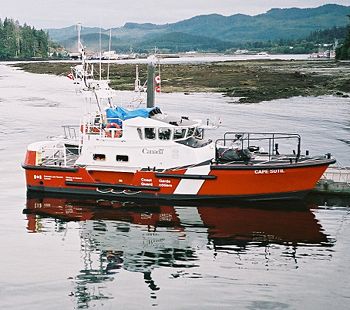Lifeboat (search and rescue): Difference between revisions
Jump to navigation
Jump to search

imported>George Swan m (correction) |
mNo edit summary |
||
| (One intermediate revision by one other user not shown) | |||
| Line 1: | Line 1: | ||
{{subpages}} | {{subpages}} | ||
{{ | {{dambigbox|search and rescue vessels|Lifeboat|Lifeboat}} | ||
{{Image|CCGC Cape Sutil at CCG Station Port Hardy.jpg|right|350px|A [[Canadian Coast Guard]] Search and Rescue lifeboat.}} | {{Image|CCGC Cape Sutil at CCG Station Port Hardy.jpg|right|350px|A [[Canadian Coast Guard]] Search and Rescue lifeboat.}} | ||
Organizations with [[Search and Rescue]] duties maintain shore-based '''lifeboats''' ready to go to sea to search for lost or stranded individuals. | Organizations with [[Search and Rescue]] duties maintain shore-based '''lifeboats''' ready to go to sea to search for lost or stranded individuals. | ||
| Line 17: | Line 17: | ||
==References== | ==References== | ||
<references/> | <references/>[[Category:Suggestion Bot Tag]] | ||
Latest revision as of 16:01, 11 September 2024
This article is about search and rescue vessels. For other uses of the term Lifeboat, please see Lifeboat.
Organizations with Search and Rescue duties maintain shore-based lifeboats ready to go to sea to search for lost or stranded individuals. The first boats built with rescue in mind were constructed in the mid-eighteenth century.[1] Modern search and rescue lifeboats are self-righting, and equipped with modern navigation technology.
References
- ↑ Clayton Evans (2004). Rescue at Sea. Naval Institute Press. ISBN 1591147131. Retrieved on 2009-02-20.
